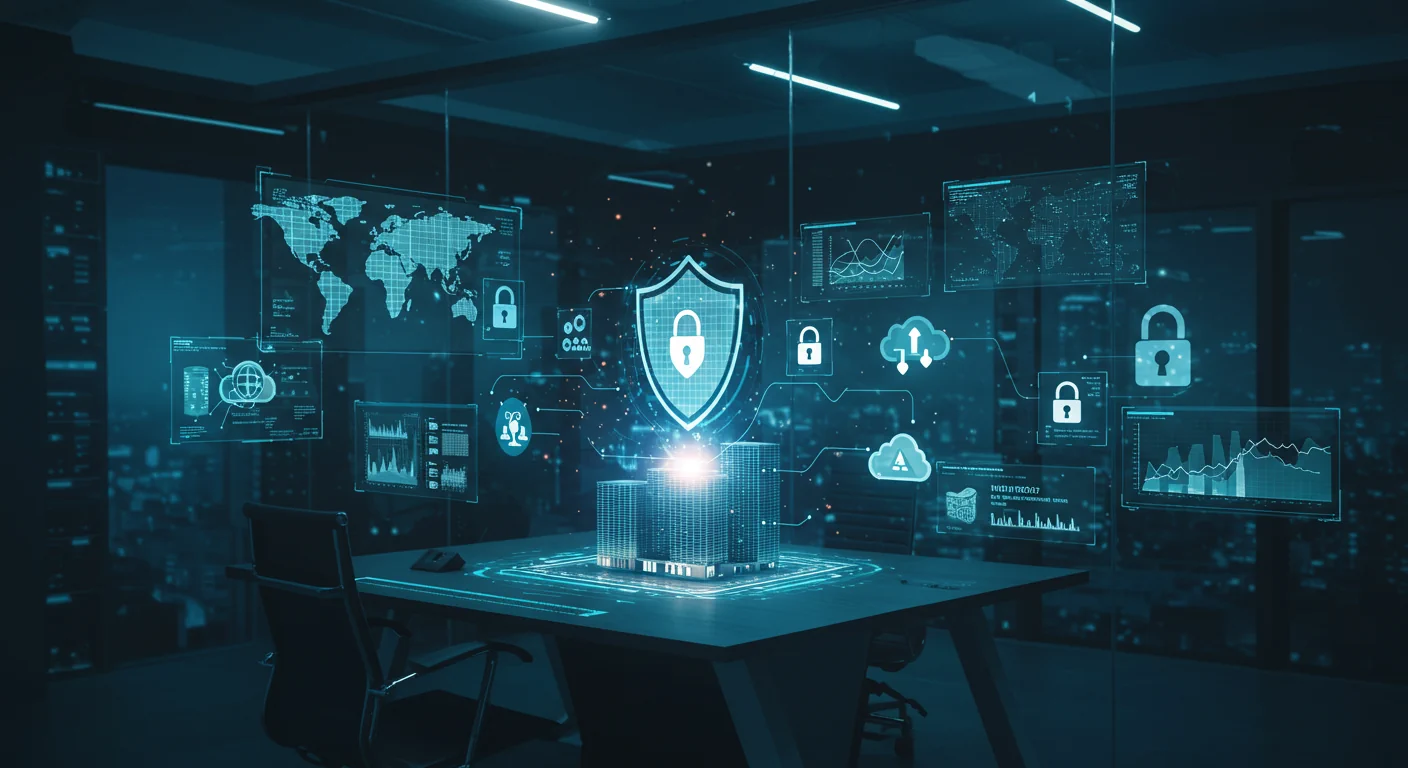Introduction: The Imperative of Protection in the Digital Landscape
In today’s contemporary digital landscape, where valuable information is created, stored, processed, and transmitted at impressive speeds, Information Security has emerged as a critical and indispensable discipline. Whether for individuals, businesses, or governments, the ability to protect confidential data, essential systems, and the digital infrastructure itself against a variety of threats has become a non-negotiable priority. The loss, theft, or corruption of information can lead to devastating consequences, ranging from financial losses and reputational damage to risks to national security and individual privacy.
Therefore, for anyone navigating the digital world, whether using social media, conducting online transactions, working remotely, or managing business data, understanding the fundamentals of Information Security is essential. This article has been carefully crafted for you, the beginner, seeking to demystify this vital field and understand how to protect your digital assets in the online environment.
Unveiling the Concept: What Exactly is Information Security?
At its core, Information Security refers to the set of practices, policies, procedures, and technologies implemented to protect the confidentiality, integrity, and availability of information. In other words, it’s about ensuring that information is accessible only to authorized individuals (confidentiality), that it is not altered or destroyed in an unauthorized manner (integrity), and that it is available when and where it is needed (availability).
Thus, Information Security is a broad concept that encompasses not only the protection of digital data but also information in physical format (such as printed documents). However, given the increasing digitization of the world, the primary focus falls on the protection of digital assets, including data stored on computers, servers, mobile devices, and in the cloud, as well as the systems and networks that process and transmit them.
The Pillars of Protection: The Three Pillars of Information Security
Information Security is based on three essential pillars, known as the CIA triad:
1. Confidentiality: Firstly, confidentiality ensures that information is accessible only to authorized individuals, entities, or processes. Mechanisms such as encryption, access control (passwords, biometrics), two-factor authentication, and information classification policies are used to protect confidentiality.
2. Integrity: Secondly, integrity ensures that information is not modified, altered, or destroyed in an unauthorized, accidental, or intentional manner. Mechanisms such as regular backups, version control, digital signatures, checksums, and change control policies are implemented to maintain data integrity.
3. Availability: Additionally, availability ensures that authorized users have access to information and systems when needed. Mechanisms such as hardware and software redundancy, disaster recovery plans, backups, uninterruptible power supplies (UPS), and continuous monitoring are crucial to ensure availability.
The Threat Landscape: Common Types of Information Security Threats
The digital environment is rife with threats to information security, which can originate from various sources:
1. Malware: Firstly, malicious software such as viruses, worms, trojans, ransomware, and spyware, designed to damage systems, steal information, or gain unauthorized access.
2. Phishing: Secondly, fraudulent attempts to obtain confidential information (passwords, banking details) disguised as legitimate communications, usually via email, messages, or fake websites.
3. Social Engineering: Additionally, psychological manipulation techniques used to deceive people and gain access to confidential information or systems.
4. Denial-of-Service (DoS and DDoS) Attacks: Furthermore, attempts to make an online system or service unavailable to its legitimate users by overwhelming it with malicious traffic.
5. Insider Threats: Finally, risks posed by employees, former employees, or business partners with access to internal information and systems.
6. Physical Threats: Theft of devices, damage to equipment, fires, floods, and other physical occurrences that can compromise information security.
7. Brute-Force Attacks: Systematic attempts to guess passwords or encryption keys by trying all possible combinations.
8. Software Vulnerabilities: Flaws or security breaches in software and operating systems that can be exploited by attackers.
9. Man-in-the-Middle (MitM) Attacks: Interception and potential alteration of communication between two systems without the involved parties realizing it.
10. SQL Injection Attacks: Exploitation of vulnerabilities in web applications that interact with SQL databases, allowing attackers to execute malicious commands.
The Protective Shield: Best Practices for Information Security for Beginners
Adopting good information security practices is fundamental to protecting your digital assets:
1. Strong and Unique Passwords: Firstly, use complex passwords (with uppercase and lowercase letters, numbers, and symbols) and avoid using the same password for different accounts. Consider using a password manager.
2. Two-Factor Authentication (2FA): Secondly, whenever possible, enable two-factor authentication, which adds an extra layer of security by requiring a second method of verification in addition to the password.
3. Keep Your Software Updated: Additionally, regularly update your operating systems, browsers, antivirus software, and other software to patch known security vulnerabilities.
4. Be Careful with Suspicious Emails and Links: Furthermore, do not click on unknown links or open attachments from emails from untrusted senders, as they may contain malware or be phishing attempts.
5. Use Antivirus and a Firewall: Finally, install and keep updated reliable antivirus software and enable your operating system’s firewall to block unauthorized access.
6. Back Up Regularly: Create backup copies of your important data in a secure location (external or in the cloud) so you can restore them in case of loss or system failure.
7. Protect Your Physical Devices: Use passwords or biometrics to lock your computers and mobile devices, and avoid leaving them unprotected in public places.
8. Be Cautious on Public Wi-Fi Networks: Avoid accessing confidential information on unsecured public Wi-Fi networks or use a VPN (Virtual Private Network) to encrypt your connection.
9. Learn to Identify Social Engineering: Be aware of manipulation tactics and do not share confidential information with unverified individuals.
10. Securely Destroy Confidential Information: When discarding physical documents or storage devices, ensure that confidential information is properly destroyed (shredding documents, formatting disks).
The Architecture of Defense: Layers of Information Security
In corporate environments, information security is generally implemented in layers, creating a defense in depth:
1. Physical Security: Firstly, controls to protect physical access to facilities and equipment (security cameras, card access control, surveillance).
2. Network Security: Secondly, controls to protect the network infrastructure against unauthorized access and attacks (firewalls, intrusion detection systems, network segmentation).
3. Operating System Security: Additionally, secure configurations, updates, and patches to protect operating systems against vulnerabilities.
4. Application Security: Furthermore, secure development practices, security testing, and access controls to protect software applications.
5. Data Security: Finally, encryption, access control, data retention and disposal policies to protect information at rest, in transit, and in use.
6. Administrative Controls: Policies, procedures, training, and awareness programs to guide user behavior and ensure compliance with security practices.
The Human Element: The Importance of Information Security Awareness
Despite advanced technologies, the human factor remains one of the most important (and often weakest) links in the information security chain. Information security awareness programs are crucial for educating users about threats, best practices, and the organization’s security policies. Informed users are the first line of defense against many threats, such as phishing and social engineering.
The Contingency Plan: Disaster Recovery and Business Continuity
Even with the best security measures in place, incidents can occur. Disaster Recovery Plans (DRP) and Business Continuity Plans (BCP) are essential to ensure that an organization can recover quickly from an incident (such as a system failure, a cyberattack, or a natural disaster) and continue operating with minimal disruption. These plans include data backup and recovery procedures, emergency communication, and contingency plans for critical processes.
The Future of Protection: Trends in Information Security
The field of information security is constantly evolving, driven by new technologies and emerging threats:
- Artificial Intelligence (AI) and Machine Learning (ML) in Security: Utilizing AI and ML for advanced threat detection, anomalous behavior analysis, and automated incident response.
- Advanced Biometric Authentication: More secure and convenient authentication methods, such as facial and iris recognition.
- Cloud Security: Protecting data and applications in cloud computing environments.
- Internet of Things (IoT) Security: Protecting connected devices and the data they generate.
- Blockchain for Security: Exploring the potential of blockchain to enhance security and transparency in various applications.
- Data Privacy: Regulations such as GDPR (General Data Protection Regulation) drive the need to protect the privacy of personal data.
- Zero Trust: A security model that assumes no entity (user, device, network, or service) is inherently trustworthy and requires continuous verification.
Conclusion: Constant Vigilance in the Digital World
Information Security is not a product or a single solution, but rather a continuous and dynamic process that requires constant vigilance, adaptation to new threats, and the involvement of all users. For beginners, understanding the fundamental concepts, common threats, and best practices is the crucial first step in protecting their digital assets and contributing to a safer online environment.
Remember that information security is a shared responsibility. By adopting safe habits and staying informed about the latest threats and countermeasures, you become a strong link in the protection chain of the digital world. The journey to information security is ongoing, but the initial steps are fundamental to building a solid foundation and navigating the ever-evolving digital landscape with greater confidence.
Therefore, embrace the importance of information security and start implementing best practices to protect your data and systems today. Your digital security is a priority that deserves your attention and care.
Did you enjoy the article “Information Security – Shielding the Digital World”? Check out more here.








